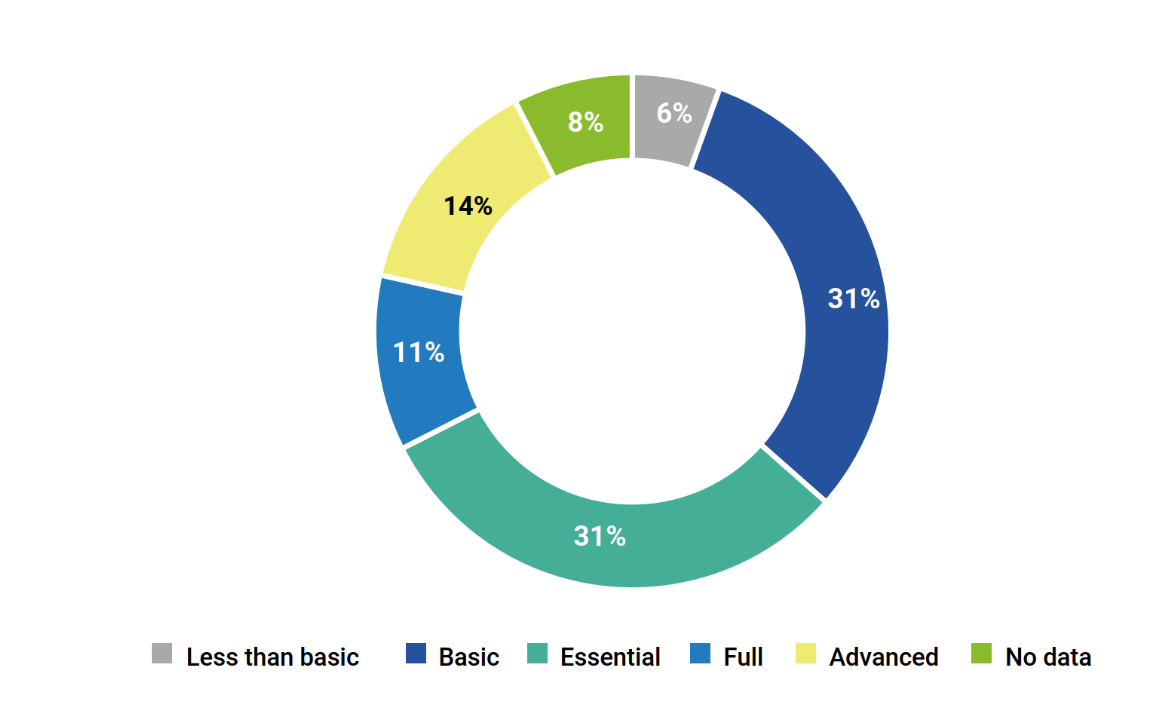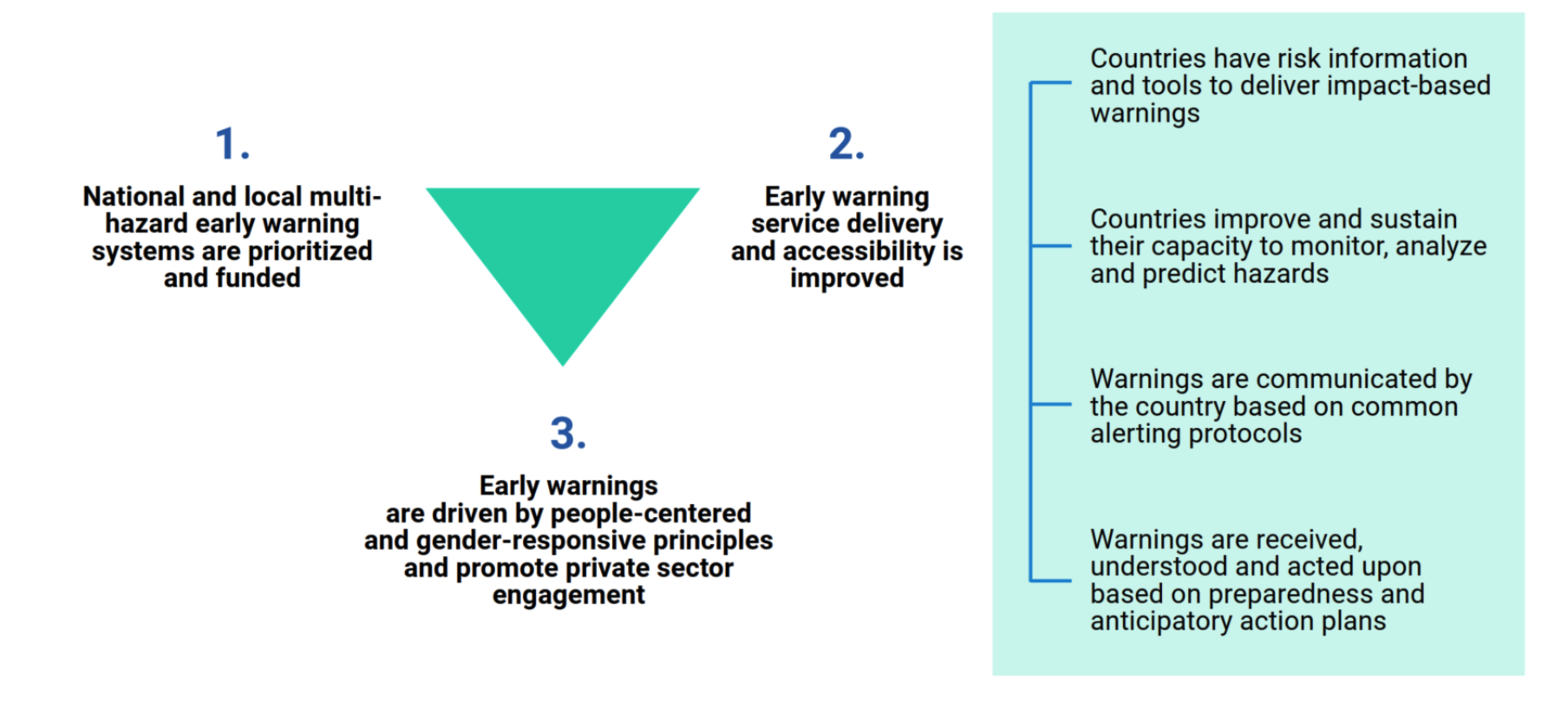Closing the Climate Information Gap: Scaling Up Early Warning Systems for Small Island Developing States
Early warning systems and robust climate information and monitoring are crucial to protecting human and physical capital in Small Island Developing States (SIDS) from the damage wrought by extreme weather events. For instance, analysis shows that countries with limited early warning coverage have disaster mortality that is six times higher than countries with substantial to comprehensive coverage.
However, according to research conducted for the State and Trends in Adaptation 2025: Small Island Developing States report (STA2025), only 39 percent of SIDS have reported the existence of multi-hazard early warning systems (MHEWS), much lower than the global average of 52 percent and Least Developed Countries (46 percent). While the historical trend is clearly upward (only 5 SIDS reported having MHEWS in 2015), there is a clear need for expedited support to SIDS. Disaster risk knowledge is also mostly lacking, with only 24% of SIDS reporting the availability of some disaster risk information and assessments.
A review of 32 updated first and second NDCs submitted by SIDS reveals that 75% have explicitly mentioned the need for climate information services, emphasizing their critical importance in coastal zones, agriculture and food security, water, and health. Effective implementation of NDC commitments requires access to high-quality climate information. However, based on available data from 34 SIDs, only 25% provide climate data at an advanced level (Figure 1).
Figure 1. Climate Service Capacity Levels Based On 34 SIDS for Which Data Is Available

Because of their remote and sometimes widely dispersed locations and lack of resources, SIDS often face unique challenges in generating and circulating essential climate information. Significant gaps remain for SIDS in the Global Basic Observation Network (GBON) of surface-based observations of the most essential weather and climate variables, and in hydrological monitoring. Only 55% of NMHSs offer standard hydrological data and products. The mobile-broadband penetration rate is also much lower in SIDS as compared to the world average, with internet use present in only 27 percent of the population in Papua New Guinea, for example. Of the 45 countries that have implemented a mobile-enabled EWS globally, only one is a SIDS.
SIDS also face capacity challenges related to underfunding of services, high turnover, and a lack of capacity-building and training. Almost three-quarters of the 24 NMHSs (National Meteorological and Hydrological Services) reviewed in SIDS spend more than half of their budget on personnel, which significantly limits their capacity to sustain operations.
EWS in SIDS: the Role of International Development and Regional Collaboration
Given the oftentimes limited capacity of SIDS, enhanced regional collaboration in generating and sharing climate data can help SIDS overcome technical and financial barriers to developing and maintaining robust climate information systems. For this, the role of international development partners is crucial.
Many such efforts are now ongoing. To support the increased coherence and alignment of investments, the UN Office for Disaster Risk Reduction (UNDRR) and the World Meteorological Organization (WMO) have begun tagging and tracking early warning system investments to increase the alignment of existing and planned investments from international donors.
As of July 2024, the Early Warning Systems Investments Observatory has recorded 88 projects funded by MDBs in SIDS, of which 80 are ongoing and eight are currently in the pipeline. Most projects (68) are national in scope, tailored to the specific needs of individual SIDS. Twenty projects focus on regional collaboration, promoting shared solutions among multiple island nations. This demonstrates a growing recognition of the importance of both individual and collective action in building resilience against climate-related risks. Analysis of the 88 projects reveals that a total of $2.4 billion has been allocated to support the strengthening of early warning systems as a crucial aspect of climate change adaptation and disaster risk reduction across SIDS.
WMO is also directly supporting more than 30 SIDS in the Asia-Pacific, Caribbean, and African regions through its own projects, while ensuring alignment with other ongoing initiatives and creating synergies with national adaptation plans and strategies. In these projects, WMO functions both as an implementor and a coordinator, enabling exchanges, collaboration and sharing of best practices between SIDS that may experience the same hazards and adaptation challenges. Currently, WMO projects in SIDS are funded by CREWS, the European Union, the Swiss Agency for Development Cooperation (SDC) and the Inter-American Development Bank (IADB).
Finally, global pooled funds like the Systematic Observations Financing Facility (SOFF) and the Climate Risk and Early Warning Systems (CREWS) initiative are also vital to support these efforts. SOFF plays a critical role in supporting countries, particularly LDCs and SIDS, by providing long-term financial and technical assistance to address key data gaps in basic weather and climate observations. Since becoming operational in July 2022, SOFF is already supporting 66 countries, of which 36 are SIDS. A total funding of $33.2 million has been approved for SIDS, both for readiness and investments.
Launched at COP21 in 2015, CREWS is a financial mechanism which funds projects in Least Developed Countries (LDCs) and SIDS to establish risk-informed early warning services. CREWS responds to country-specific needs and demands, utilizing diverse financing modalities, thanks to direct contributions from 12 member countries.
Figure 2. How Countries Benefit from CREWS Funding

Source: CREWS
To date, total funding of $32.7 million has been allocated to SIDS through CREWS multi-year projects for the Caribbean, Pacific, Haiti, and the south-west Indian Ocean and from the CREWS accelerated support window for Vanuatu, Tonga, the Maldives, Cuba, and Belize.
To sum up, it is clear that funding for climate adaptation measures and early warning systems in SIDS has been increasing. There is an urgent need to continue to scale up and fast-track these actions, focusing on investments that provide co-benefits across agendas. Enhancing observations, climate services, and MHEWS are key areas where such co-benefits can be realized. With the increasing momentum to fund early warning systems, projects with a particular emphasis on SIDS are likely to continue to be prioritized by donors.

Chandrahas Choudhury is a writer and editor based in India. This blog is based on the Early Warning Systems and Climate Data chapter from the STA2025 report, authored by Daniela Cuéllar Vargas, Veronica F. Grasso, Nakiete Msemo, Assia Alexieva, Moyenda Chaponda, Maria Lourdes Kathleen Macasil, Lina Sjaavik, Anaïs Bellalouna, Claire Ransom, Pauline Trepczyk, Meerim Ashakeeva (World Meteorological Organization [WMO]).
The ideas presented in this article aim to inspire adaptation action – they are the views of the author and do not necessarily reflect those of the Global Center on Adaptation.